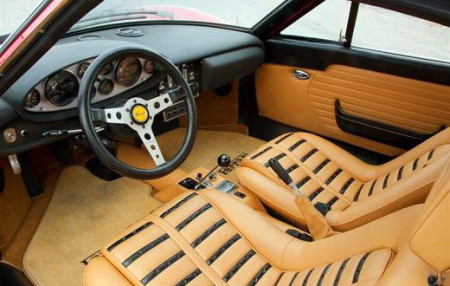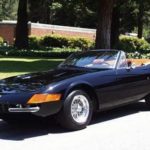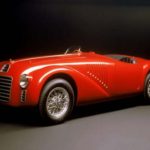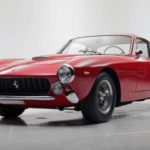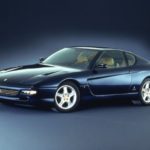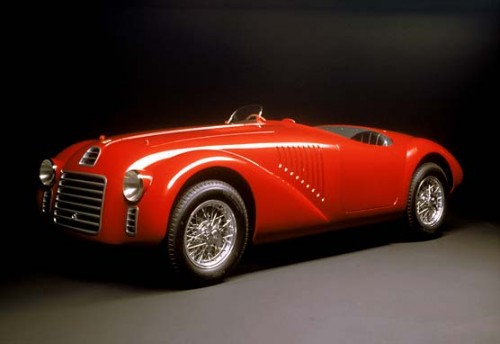Ferrari Dino - Model History

Ferrari dino
Throughout the extremely rich history of the famous Italian sports car factory Ferrari, always fast, modern and interesting cars have arrived on the streets and tracks around the world.
Many of them, who wore the famous badge with a horse on the hood, often set standards in the production of sports cars and represented a turning point in further thinking. The model that, from today's distance, can be said to have influenced Ferrari the most, placing the brand at the top of the nomenclature of super-sports manufactories, is the famous 246 GT Dino. As with all eternal Ferrari cars, this one has an interesting story with a touch of legend. The development of this model indirectly began in the early fifties when Vittorio Jano, an old acquaintance of Enzo and an excellent engineer, together with Alfred Ferrari, called Dino, the eldest son of the legendary gentleman, developed a prototype of a small V6 engine for Grand Prix racing. Both, exceptional experts, create several road prototypes and race cars, but "Comandatore" or Enzo do not approve of the production.
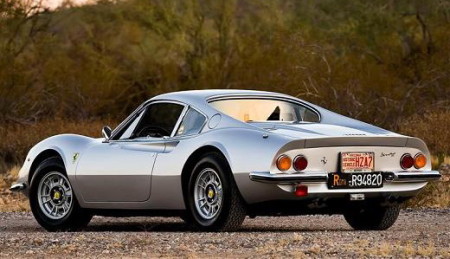
Ferrari dino
Unfortunately, in 1956, after a long illness, Dino Ferrari died of leukemia, not completing the project. The rest was noted at Dino Hospital arguing with his illustrious father about the benefits of a small V6 engine packed with power and the ability to fit into any of the existing models. With his death, the project freezes until further notice. Passing into the sixties and during their first half, Ferrari became a recognizable super-brand, thanks to many successful models and dominance of the racetracks in almost every major class. It is little known that during this period the factory was in financial trouble because of Enzo's altruistic desire to create as many race cars as possible and to crown them with victories on the track. Such a philosophy required a lot of money that had to be secured by selling road vehicles. During this period, Ferrari was known for luxury sports cars, 2 + 2 coupes or super-sports cars to which the license plate could be mounted.
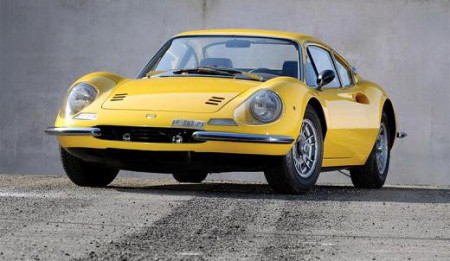
Ferrari dino
An example of such thinking is the mystical, almost esoteric, 250 GTO (1962), the fantastic 250 LM (1964) and the beautiful and overpriced, 250 California Spider (1961). An obstacle to higher sales was only one unit on offer, which could be obtained with different power and volume. It is a classic Colombo V12 engine that has been a feature of Ferrari cars from the very beginning. At that time, versions of 3.0 and 4.0 liters of volume were produced, with power from 250 hp to 350 hp. During 1965, Enzo Ferrari finally allowed the development of a new model that would be much smaller in size than the factory's current products, equipped with a V6 engine and full of technical "know-how" picked up at races. Ideally, the car should have a slightly lower price with which it should be accessible to a wider circle of people. Therefore, the Vittorio Jano completes the construction of the two-liter V6 engine, which had an aluminum block and an angle between the cylinders of 65 degrees, for installation in a "civilian" coupe.
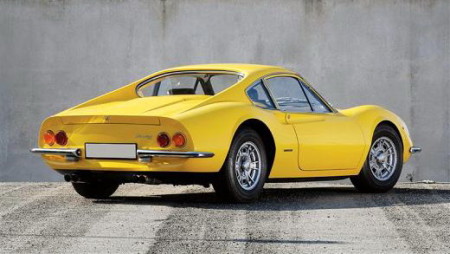
Ferrari dino
During the presentation, at the Turin Motor Show in 1967, an extremely bold and interesting creation saw the light of day. Namely, in addition to the new engine that developed 165 hp and was centrally and transversely placed behind the driver, and in front of the rear axle the car was equipped with a fully aluminum body mounted on a tubular chassis, it had independent suspension and light metal wheels with "knock". -off ”racing mechanism. The interior was recognizable Ferrari style with leather-lined seats and a chrome gear knob. The body was designed, of course, by Pininnfarin and the look itself was created according to the results of tests in an air tunnel, which was a rarity in those years. Particularly well solved is the issue of visibility from the car, which has always been a problem with vehicles with a central engine, with the installation of a nearly vertical rear window and side windows that have been properly fitted.
The new model is named 206 GT Dino, in honor of the late Alfred. It is interesting that during their production, none of these cars bore the Ferrari mark, both on the body and on the engine, but only the model mark and in place of the famous emblem, on the hood, a plate with a stylized inscription "Dino". The reactions of the automotive public were divided from the very beginning. On the one hand, orthodox fanatics and fans of the Ferrari brand did not accept the car, considering it unworthy of the heritage of the factory in Maranello. The biggest complaint was the absence of a twelve-cylinder "heart" without which, in their opinion, Ferrari is not Ferrari, and the strange design and poor comfort for passengers. On the other hand, most welcomed him with enthusiasm, recognizing in him a modern concept and technique, excellent performance and a big step forward for the Italian factory. Expectations were high due to the announced lower price, which was interpreted as the appearance of a "cheap" Ferrari model.
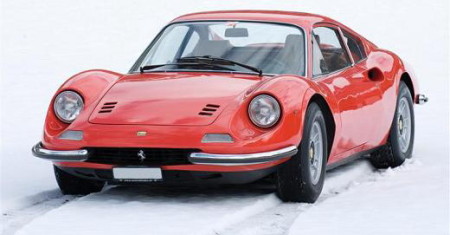
Ferrari dino
Unfortunately, the price promises were not fulfilled and the 206 GT Dino cost just a little less than other models. Namely, due to the aluminum body, advanced mechanics and luxurious details, it was expensive to produce and, despite its excellent performance (top speed of 238 km / h and 0 to 100 km / h in 7.5 seconds), it did not sell well. Realizing the message, the Ferrari at the Geneva Motor Show in 1969 unveiled a new version called the 246 GT Dino, which was fitted with conventional steel body panels, vinyl seats and ordinary wheels. The engine remained the same, the V6, but with 2.4 liters of volume with a steel block and 190 hp at 7000 rpm. Performance was improved so the top speed was 248 km / h and acceleration to 100 km / h became possible in seven seconds. The car prepared in this way was a formula for success and with noticeably lower prices, orders began to arrive.
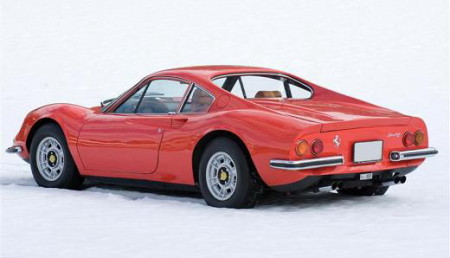
Ferrari dino
Customers were very pleased with the new Ferrrari model, as the V6 was much more reliable than the V12, the small size allowed for everyday use, and maintenance costs were lower. The car's behavior on the road was commendable, as the independent suspension, good brakes and excellent weight distribution due to the centrally placed engine, made Dino "sharp" like a race car. Due to its qualities, this Ferrari could be used as the only car.
During the production, three series were released from the factory, under the internal designations L (1969), M (1970) and E (1971), which differed from each other and with respect to the 206 GT, in details such as the shape and position of the bumper and blinkers and license plate position. In addition, versions for the US market also had larger and modified Plexiglas-covered bumpers and headlights. In addition, the models sold in the US market also had slightly reduced performance due to restrictive exhaust laws.
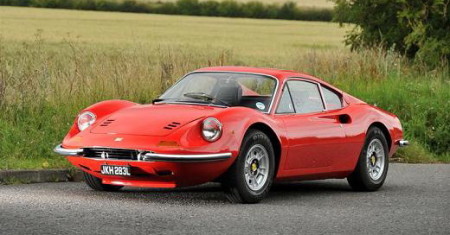
Ferrari dino
In 1972, the 246 GTS Spider, a convertible version of targa, was introduced, with the center of the roof removable. And this version has achieved full success thanks primarily to convenience. Namely, the roof panel was made of lightweight material, so one person was enough to handle it. Also interesting was the way the roof was positioned vertically behind the seat and so delayed it did not reduce visibility. And on the track, Dino had success and justified his reputation. Because of the startup racing technology and the undercarriage, in factory-made GTRs, only the engine has undergone tuning and the body is devoid of unnecessary luxury. Most often, mountain racing was the place where this model proved itself, almost always in the hands of private teams, and today at the racing racing sports old-timers, the Ferrari 246 GT Dino is a serious favorite. Seven years after its launch in 1974, production stopped after 3,500 copies of the 246 GT and about 120 pieces in the 206 GT.
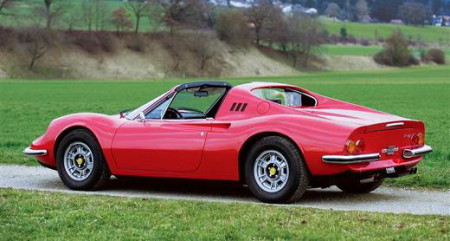
Ferrari dino
This, by all measures, successful high-class sports car inherited the famous 308 GTB, which also bore the designation "Dino", but in this case, for the V8 engine. Today, the 206/246 GT is a very popular classic car. Prices range from 45000 to 65000 euros depending on the condition and version. Although it is a large amount of money, it is a small price for an old-fashioned Ferrari, especially if it is known that this model is among the cheaper examples of the original Ferrari spirit. In addition, due to all the qualities, its daily use is possible, provided that the owner can bear the extremely high prices of spare parts and services.
The value of this model is that it has placed the already famous factory in the highest positions in the exclusive world of sports auto manufactories, making it a versatile manufacturer. The ensuing years also brought new models of small two-seater sports such as the 308 GTB, 328, 348, F355 and even 360 Modena. It is through these models that the members of the lineage are started by the immortal 206/246 Din Ferrari has become the most famous and respected sports brand in the automotive world.
Author: 426 Hemi
Retrieved from: www.brzabrzina.com
Recommendation of similar texts:

Hi there, I am Mladen and I am an auto enthusiast. I started this blog years ago to help like minded people share information about latest cars, car servicing ideas, used car info, exotic cars, and auto technology. You will find helpful articles and videos on a wide variety of cars - Audi, Mercedes, Toyota, Porsche, Volvo, BMW and much more. Ping us if you have anything cool to share on latest cars or on how to make older cars more efficient, or just want to say hi!

